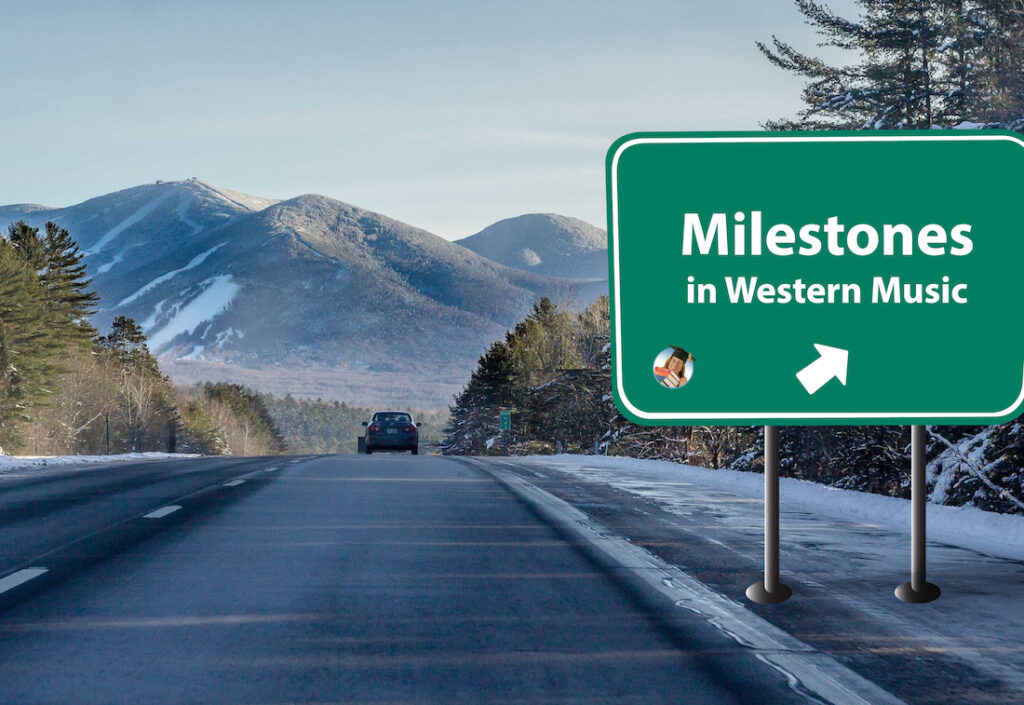In choosing a name for our new webinar series, I was drawn to the term “milestones.” According to one of my favorite etymological sources, milestone came into common usage in the 1740s as a designation for stones set at mile-intervals along English roads.
 This information, though, is misleading, since the concept of milestone goes back at least to the Roman Empire. For example, evenly placed stones designating distance were set along the Appian Way. The Romans get credit, too, for the Golden Milestone—a zero point out of which a network of principal roads lead and are measured.
This information, though, is misleading, since the concept of milestone goes back at least to the Roman Empire. For example, evenly placed stones designating distance were set along the Appian Way. The Romans get credit, too, for the Golden Milestone—a zero point out of which a network of principal roads lead and are measured.
Milestones in the arts follow the same principle. While not evenly spaced, artistic works worthy of the descriptive “milestone” offer measuring points along the curve of each art’s development. Clearly no artist creates a work on a Wednesday, only to rise on Thursday and have the world call it a “milestone” (even if some critic does!). It takes time before the dust settles and a realistic, valid assessment of a creative piece can be formed.
Of particular interest to me are what might be called artistic Golden Milestones, works from which multiple new paths of creativity will stem. These works may hit the world like an explosion—Stravinsky’s Rite of Spring springs to mind (no pun intended). Or they may lie in relative quietude until their true substance and worth comes to be valued (Bach’s magnificent two-volume collection of preludes and fugues known as The Well-Tempered Clavier fits this description).
Another fun component in this series will be sessions devoted to works that are more aptly described as flecks of gemstones, rather than musical equivalents of the Cullinan diamond (at 3,106 carats, the largest diamond presently known). But think about it: aren’t short, beloved pieces like Für Elise or Claire de lune the ones that catch the ears of young people who may even begin to ask for lessons in order to play them?
So I’ll inaugurate the series on Tuesday, January 24, with a medium-weight milestone: Maurice Ravel’s Boléro (1928). Few classical works are as popular as this one. Its familiar strain appears just about everywhere from TV commercials to half-time programs of the local high-school marching band.
Boléro is flawlessly designed. Based on a short thematic fragment repeated incessantly, its powerful effect depends completely on Ravel’s intensified, kaleidoscopic turning of the instrumentation. Still (not to give away too much), for all of its glories, I personally came to appreciate Boléro across a rocky path—a story I’ll tell in our session. Also I look forward to tracing the many roads that meet at this work, making it arguably a Golden Milestone.
Join us this coming Tuesday at 8:00 p.m. for our initial webinar on Boléro. Registration is $5 (free to members of the Circle of Scholars).



